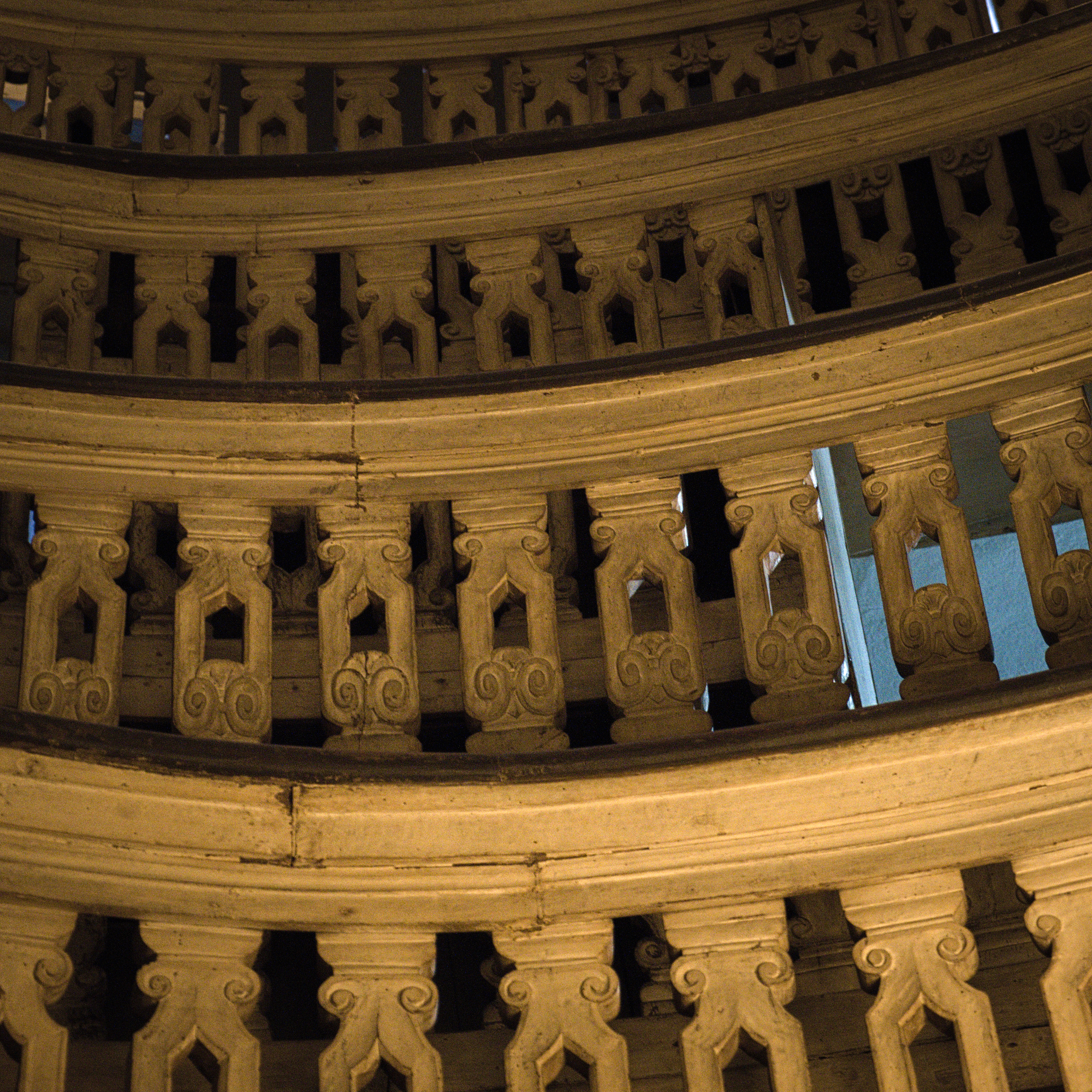Via Romea Germanica XXI
Padova, Italy

Padova, Italy
We stayed in a small flat lodged between three Padova piazze: Erbe, Signoria, and Frutti. Early in the morning, we heard trucks pulling booths into the squares. By the time we were ready to leave our flat, the piazze were filled with the vendors of the morning markets.

Morning markets, Padova.
The historical center of Padova is deeply appealing. Like Bologna, many of the streets are lined with porticos, which are both ornamental and create shady spaces that protect pedestrians from the sun and the rain.
Padova was the second capital city of the Veneto, and shares many characteristic design features with La Serenissima. The buildings are embellished with loggias, porticos, and the ever-present lion of San Marco,
Welcome to the Peripatetic Historian's multi-part series about hiking the Via Romea Germanica.
If you have stumbled across this installment by accident or a fortuitous Google search, and have no idea what is happening, you might prefer to begin at the start of the series, here: Introduction to the Via Romea Germanica
Otherwise, let's return to our story, already in progress.
In the morning we visited the basilica dedicated to Padova’s most famous son, Anthony of Padova. Saint Anthony was originally from Portugal. Raised in a wealthy family, he eventually elected to join the Augustinian order, which trained him in theology and doctrine. The young man was attracted to the ideals and lifestyle of the newly-formed Franciscan order, and he successfully petitioned to transfer his affiliation and become a friar. Upon joining the Franciscans, he took the name Anthony, naming himself after St Anthony of Egypt.
After a failed missionary trip to Morocco, Anthony ended up in northern Italy, eventually settling in the Veneto. He became widely known for his oratorical excellence: his preaching and teaching were renowned across Europe.
Anthony died in 1231. A basilica was built to house his body. According to tradition, Anthony’s tongue, the agent of his oratorical prowess, did not deteriorate after his death. It is incorrupt, a mark of his sainthood. Evidently, the tongue is on display in the Church of Saint Anthony.

The Prato
We made our way to the church, passing through a large circular monumental space, the Prato della Valle. Here, in 1775, land that was once owned by the monastery of San Justina was converted into one of the largest squares in Europe. The Prato is an elliptical canal that is flanked by dozens of statue. It is a wonderful and impressive space.
Upon the death of St Anthony, a church was built to house his remains. Today the church is one of the major attractions of Padova. The people abbreviate St Anthony as “Il Santo” (The Saint), and he is extremely important in Padovan culture.

Church of St Anthony
The parking lot in front of the church was filled with mini vans when we arrived. This should have been a clue. When we entered, a service was in progress, and the church was packed with people. It was one of the most ornate churches I have ever seen. I would have pictures of it, but the signs forbade photography inside the sanctuary. We wandered in the side aisles and visited the cloisters. At the end of the building, behind the altar, was a chapel of relics. Here we were able to see St Anthony’s tongue, displayed in a gold reliquary. It is said to be incorrupt, as fresh as when St Anthony used it, but I was not convinced. I would characterize it as blackened, shriveled, but still impressive after nearly 900 years.
Padova is also home to a very old medieval university. The oldest university in the world is the University of Bologna, established as a law school in 1088. Padova, the second oldest university in Italy, was founded in 1222. We took a tour of the Palazzo Bo, one of the original university buildings. Galieo spent several years teaching here, and we were able to see the lectern he used to deliver his lectures.
We also were able to see the dissection theater that made Padova one of the earliest medical schools in the world. Venice had a special dispensation from the church to permit dissection of human bodies, so Padova had a unique advantage in medical training.
The medical theater corkscrews up in a spiral around the lowest point where the body was dissected. There are no windows in the theater, so it was illuminated by candles and torches. Dissections were mostly conducted during the winter months in order to reduce decay.

The medical theater, Padova.
The church sanctioned a limited number of dissections each year. Convicts, executed in Venice, were transported to Padova. Sometimes the students would snatch bodies after funerals for extra credit work. Some of the anatomy professors dedicated their own bodies to their students after their death, setting a precedent for future generations. The skulls of these generous professors are still lodged in the building.
After resting our feet, Mary and I spent a couple of hours indulging in Padovan Cafe culture. The markets in the piazzas begin to close around lunch time, and the booths are removed. The restaurants and bars move tables out into the vacated spaces, and turn the piazze into dining spaces. We went out before dinner for appertivi, enjoying a drink while we watched people wandering past.
I think we will miss Padova. I certainly could have stayed longer.

A staircase in the golden Padova light
Today's distance: 0 KM Total distance: 363.9 KM
If you are enjoying this series, why not subscribe to Richard's monthly newsletter, What's New in Old News? The Peripatetic Historian is on the road, roaming the world and compiling fresh adventures. Don't miss out. Click here to join the legions of above-average readers who have already subscribed.